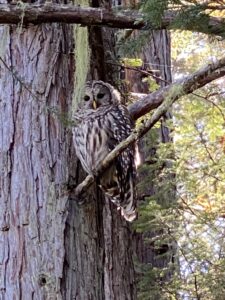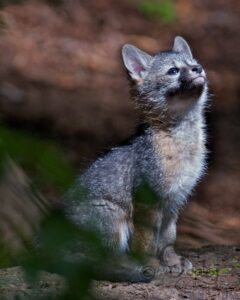Laura Baker wrote, “Here's a photo of a Barred Owl I snapped today up here in Annapolis. It's peeking behind a strand of Usnea lichen. I have to admit having mixed feelings about seeing it. On the one hand, it's a beautiful, powerful bird. But as you probably know, the Barred Owls are driving out our local and less aggressive Northern Spotted Owls.”
This beautiful owl used to be an owl of the eastern part of the United States but in the 20th century it started to migrate towards the Pacific Northwest. For better or worse, the Barred Owl is here. These owls fly noiselessly so it's often difficult to spot them.
For comparison, here's a Northern Spotted Owl, photographed some years ago by Craig Tooley.
Thank to Laura and Craig for allowing me to share their photos with you here.
No fog today and temps are very warm when you get away from the ocean!









